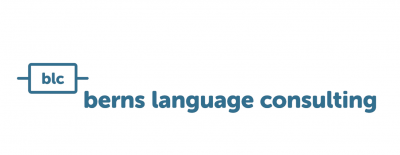Step 1: Inventory analysis and prioritization
Step 2: Set up a data model
Step 3: Start data migration
Step 4: Merge and clean up terminology
When data is merged, there are usually many duplicates. These can be complete overlaps of the entire concept, but also term overlaps in different concepts. A large number of these duplicates can be automatically detected and also cleaned up. But automation is reaching its limits, especially in the case of partial overlaps of terms and similar terms. Such clarification cases can be marked automatically and lay the basis for subsequent terminology work.
But even beyond the duplication detection, many clean-up potential can be determined automatically: From formal points such as capitalization of terms to standardization of meta-information.
Step 5: Access terminology
Step 6: Workflows for terminology work
A terminology database lives from ongoing maintenance. Only if terminology is regularly reviewed and updated can it be kept up-to-date. It is also essential to define processes for capturing new terminology. This can happen in form of singular term requests in the terminology system or by means of term extraction from source texts. Where possible, new terminology should be reviewed, released and translated into the relevant target languages even before translation.
Some terminology systems offer a workflow concept that can be used to request new terminology or terminology changes, to assign discussion requests to expert groups and approval tasks to decision making groups. In most cases, different workflows can be set up for the different company languages.
Step 7: Ensure the use of terminology
If you put a lot of effort into building and maintaining the terminology database, you also want it to be used. Regular presentations and training are helpful for this. Furthermore, the direct integration of terminology into the authoring systems offers great added value. This enables terminology research directly during writing. A big step further is taken with systems for language quality assurance, which (among other language checks) verify the correct use of terminology.
Conclusion: The journey is worth it!
If you have already arrived at step 7, you have achieved a lot! You have a cross-disciplinary terminology with standardized terms and conce- or at least you are on your way. Uniform terminology eliminates misunderstandings, both within the company and among customers. In addition, the potential for errors in translations is significantly reduced. And last but not least, you shape the corporate identity!
We will be happy to help you slice your terminology elephant!
You could not see my presentation at the tekomannual conference 2023? From November 27th you can see the recording of my lecture in the Tagungstool: “Terminology Process Makeover: Everything Everywhere all at Once”. If you have any questions, I will of course be at your side.
We have something else for you:
On 14/15 March 2024, Terminologie³ 2024 will take place once again at the Novotel in Karlsruhe. An event where terminology enthusiasts, whether beginners or full professionals, will get their terminological money’s worth. Early bird prices are also available until 10 January 2024 😉






